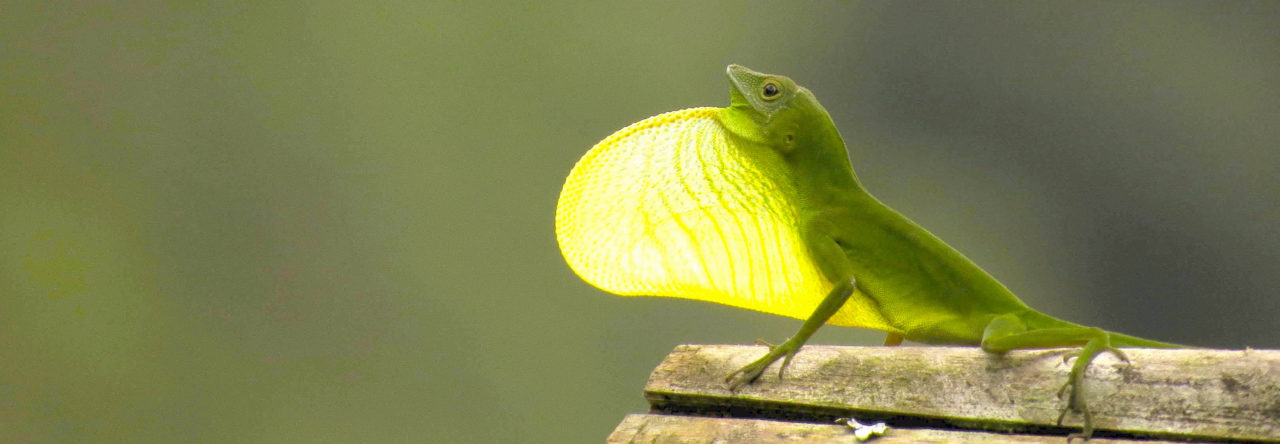 Yoel Stuart reported on studies of sympatric anoles on small, man-made islands in Mosquito Lagoon in the Intra-Coastal Waterway in Florida. These dredge spoil islands were naturally colonized by A. carolinensis and more recently—sometimes by the hand of man—by A. sagrei. Surveying a dozen or so islands, Yoel asked whether the green anoles differ in the habitat use and morphology depending on whether they occur with brown anoles. Because we know that brown anoles are recent arrivals, any differences would be recent in origin.
Yoel Stuart reported on studies of sympatric anoles on small, man-made islands in Mosquito Lagoon in the Intra-Coastal Waterway in Florida. These dredge spoil islands were naturally colonized by A. carolinensis and more recently—sometimes by the hand of man—by A. sagrei. Surveying a dozen or so islands, Yoel asked whether the green anoles differ in the habitat use and morphology depending on whether they occur with brown anoles. Because we know that brown anoles are recent arrivals, any differences would be recent in origin.
Sure enough, in the presence of browns, green anoles perch higher and have larger toepads. Assuming that the change is genetic, the rate of change would be among the fastest ever recorded. But that’s a big assumption, and as Yoel notes, laboratory studies are needed to investigate whether differences truly are genetically based. Given that the number of lamellae is a trait thought to be fixed at birth, environmentally driven phenotypic plasticity seems unlikely, but this needs to be examined directly. In addition, Yoel plans to measure vegetation structure on the islands to investigate whether, by chance, differences exist between islands with and without brown anoles.
- Evolution in Real Time on Lizard Island - March 23, 2025
- Spider Snags Adult Anolis osa - March 22, 2025
- An Homage to the Green Anoles of New Orleans - March 21, 2025


1 Pingback